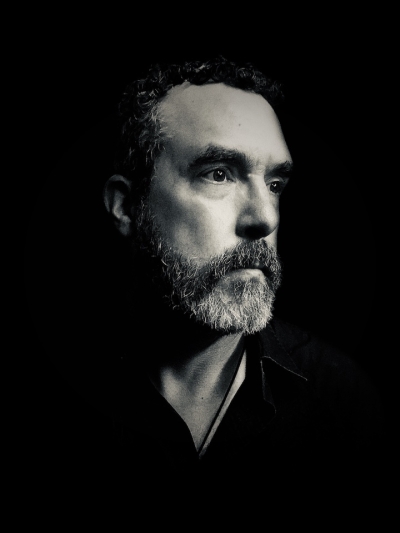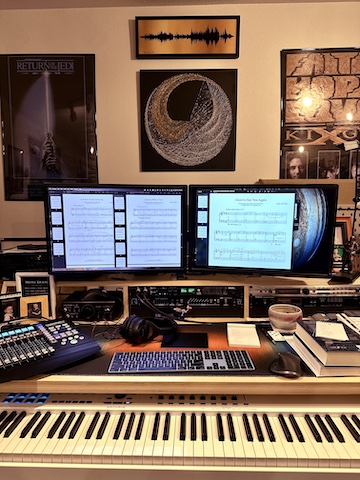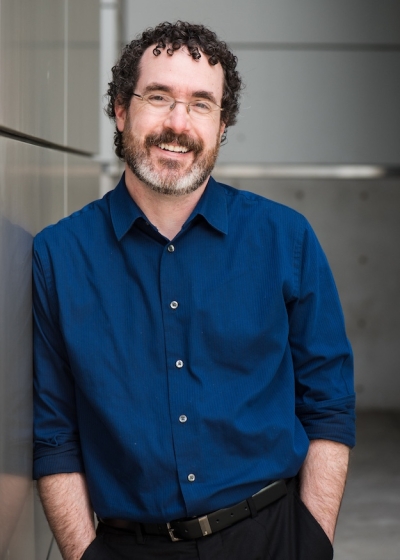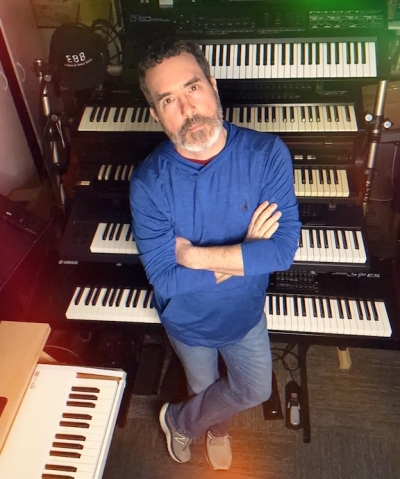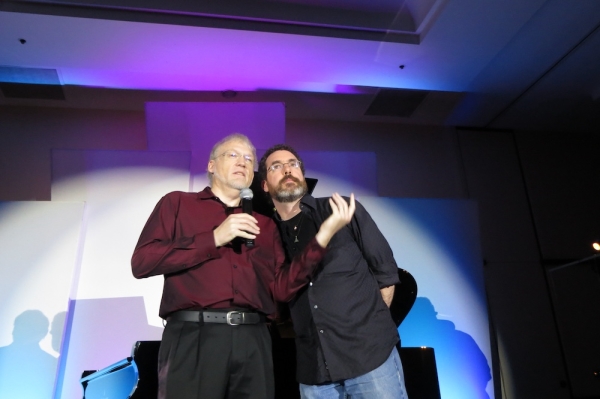I have gotten to know many musicians and composers over the years of reviewing recordings and sheet music as well as hosting house concerts, and one of my favorites is Neil Patton, an artist who lives about 60 miles east of me here in Oregon. Neil has released six piano albums since his 2007 debut,
Impromptu, and his latest album,
The Small Hours, was released in October 2024. We have been friends for a long time, so it was really great to catch up with Neil in this interview. Enjoy! If you want to learn more about Neil and his background, be sure to check out the
interview we did in 2014.
KP: Hi Neil! Man, I can't believe it's been ten years since we did an interview!!! It will be fun to catch up even though we've been in touch quite a bit lately. How are things in Eugene, Oregon today?
NP: Hey, my friend! This will be fun. I just went back and re-read our interview from 2014. Nothing like a little time-travel for my day. A lot has happened in the last ten years. Things are good here!
KP: The big news is that your new solo piano album, The Small Hours, was just released. Tell us about it.
NP: Wow, it’s a long story. After releasing my last original solo piano album,
Solitaire, in 2018, my world changed. I needed to focus hard on family for a season, and my creative life took a backseat for quite a while. I did a small amount of composing, but the fire, as well as the ability to focus creatively, just wasn’t there.
Then 2020 happened and life became really crazy. Moving my piano studio and my church work online took all my time, and yet again, outside creativity just wasn’t an option, beyond a few isolated sparks that I recorded in the moment.
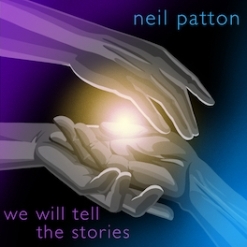
Click on album covers
to go to Kathy's reviews.
What I did find was that I needed quiet. The world was storming around me, both at large and in my life specifically. More and more, I turned to my piano for peace and prayer. I played my loud, adventurous pieces less and less, and started improvising quiet music to help me process all the anger and fighting that seemed to surround me during that pandemic season.
I think we’ll be talking about my hymns album later, but that was a real spark in helping me relax creatively again. I let my guard down, and gave myself permission to sit down at the piano and experiment again. I started intentionally improvising at night, with the lights low and the computer recording everything. What came out was series of what I called “Nocturnes.” "Nocturne 1," "Nocturne 5," etc.
Over time I would listen back to these and found the ones that truly seemed to have something to say. I started giving them real titles, which helped me shape them more into finished pieces. It was a very long process.
Another part of the process was seeing the piece of string art created by Emmanuelle Le Gal (wife and creative partner with Doug Hammer), called
The Moon and Sun Dance. Something about that work just told me it was my next album cover, even though I had no album to release. Just before the pandemic, I bought it from her and we arranged to have her ship it to me from Massachusetts. It now hangs over my composing desk. From that, and the process of creating the Nocturnes, I knew the collection needed to be about the night and what we all experience during those quiet dark hours.
So, the music covers dreams, grief, stargazing, guilt and forgiveness, insomnia, love and family ties, and many other subjects. However, it’s all in a much quieter vein than I’ve used before. In fact, I intentionally limited my dynamic range to force myself to find new ways of expressing emotion other than crashing bass notes or racing up and down the keyboard with fast arpeggios (though I do still enjoy those things very much). I feel like the results have helped me discover a new maturity and nuance in my writing and performing.
KP: It is a very different album from your earlier work, but it's a very beautiful progression and the backstory makes perfect sense in explaining the change. You released one single from the album, "We Will Tell the Stories,” which has an interesting story/inspiration. Tell us about that.
NP: I wrote "We Will Tell the Stories" back in 2019, but I was searching for a theme and a title. An old friend of mine shared how she and her family had been holding a vigil around her father’s bedside as he passed away from a long illness. At one point during the night, he became agitated and needed to know that she knew where the old family photo albums and journals were kept. She reassured him that they were safe, and that they would carry on and tell the stories. This touched me deeply, especially as two more of my own friends passed away that same week, one from cancer and one from suicide. This piece was played at two of the memorials for these men.
I actually recorded a version of this piece at Piano Haven Studio in Sedona with Joe Bongiorno that year. However, with everything else going on, I could never get myself in the headspace to release the single, and then Covid happened. So that recording lies dormant on my hard drive. I re-recorded it so that the sound would match the rest of the album.
KP: Your daughter, Corrie, did the album cover for that single. Is this her first cover? It's really well-done!
NP: Corrie’s work is amazing. She actually did graphic design for one of Richard Dillon’s albums (We Are Going), and did mock-covers in her art classes in college. However, this is her first original artwork for a professional release. Be on the lookout, as we are in the early stages of working on a huge collaboration together. This painting is part of that larger project. I don’t want to spill too much too early. I’m sure she would be interested in commissions for the future. (Her website is: corriepattonillustrates.com)
KP: I'm sure she will be very successful!
The only track on the album that isn't completely original is "Nightwalk," which is based on the classic hymn, "Be Thou My Vision." With all of the hymns to choose from, why that one?
NP: One of my fondest memories of nighttime is walking and holding my infant children in the wee hours after their mid-night nursings with Cathy. I would take over so she could sleep, and I would walk a small loop in our tiny house from the kitchen to the front door and back again, bouncing them and singing to them till they fell asleep. I would sing old hymns, and “Be Thou My Vision” was always the first. It’s my favorite hymn. We sang it in our wedding, and I’ll probably have it played at my funeral. The words are so deep, and remind us to see the world through God’s eyes, whatever else is happening. Corrie, in particular developed a deep attachment to this song as a result.
Some may notice that I have two very different arrangements of this same hymn on two albums in a row. I had already recorded an early improv of this hymn for this collection, when I recorded the new collection of hymn improvs that eventually became Holy Ground. As I had not originally intended to release those hymn recordings publicly, I never gave it a second thought. However, both were too good to not include in their respective collections, so now you have two to enjoy!
KP: It's definitely a very popular hymn!
Quite a few of the pieces are on the quieter, more reflective side, but "Above the Treetops" is quite lively and joyful. What inspired that one?
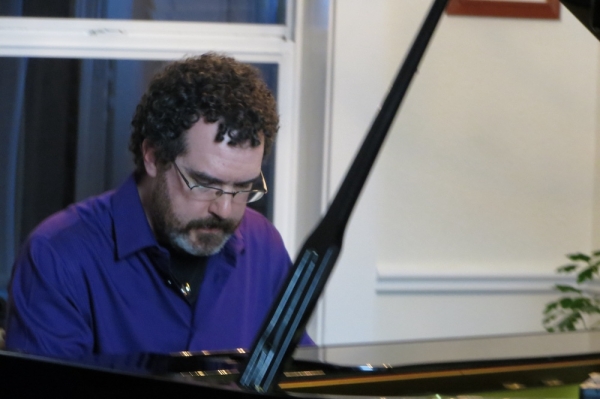
House concert at Kathy's 11/2016

Kathy's favorite photobomb ever at Whisperings 2016.
With Jeff Bjorck and Gary Girouard.
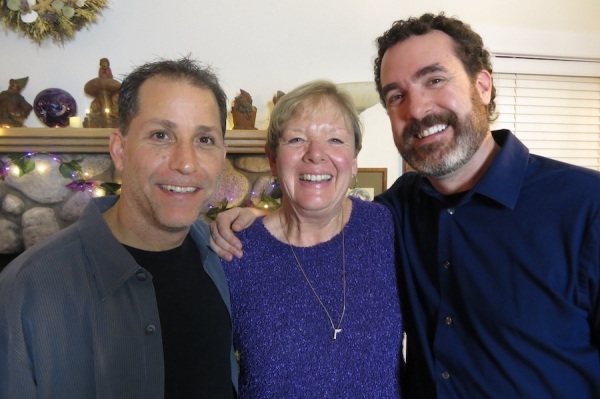
With Steve Rivera and Kathy at Kathy's 2016
NP: This, along with "We Will Tell the Stories," is one of the oldest pieces from The Small Hours. Honestly, there wasn’t a story in mind when I first composed it. It was just a fun idea in an odd meter that turned into something very fun to play. As the album took shape, I considered making it about chasing the kids down for bedtime, but it didn’t feel right for that vibe. And then I remembered my favorite dreams, both as a child and as an adult: those dreams when you discover you can fly. And it all fits with the mood now. The swooping and soaring, and the butterflies I would feel in my stomach. I’m always bummed when I wake up from those dreams.
On an earlier album, this one would have been much louder, much faster, and a bit crazy. I’m pleased with what I discovered by tempering my dynamics and tempo. (Although, when I play it live, it does tend to pick up a bit…)
KP: I'm looking forward to seeing and hearing that!
What inspired "Good to See You Again"?
NP: This piece comes from those occasional dreams when I get to see my dad again. He passed away in 2002 after a long debilitating illness. I once saw a meme with a photo of a bench on a grassy hill. The caption asked, “If you could spend one hour on this bench with anyone, who would it be?” Without hesitation, I knew it would be my dad. I miss him a lot, and I do wish my kids could have known him. He died when Corrie was 2 ½, and our son, Tim, was only 6 months old. Most of these dreams are silly or nonsensical, but every once in a while, there is deep meaning. I’ll wake up sad that it’s over, but then feel some joy that I got a few extra minutes with him. I can’t wait to see him again.
KP: I think one of the most poignant pieces is "This Grief Lies Down Beside Me." What is that one about?
NP: This piece started as an improvisation using a new reverb effect on my computer that made the piano sound like it was inside a giant stone cavern. The steady repeating notes kept reminding me of sorrow and loss for some reason. The title eventually came from the realization and acceptance that grief is not something we outgrow or leave behind. It stays with us, in some fashion, until the end. How we respond to it may change, and how big a role it plays in our daily life will change, for sure. But that big ugly book called “Grief” will always have a spot in the bookshelves of our minds. In my life recently, it was specifically about the gradual shrinking of the church where I worked for so many years, and the loss of friends and security through the pandemic months. So much changed, and some good things came out of it, but the process was a steamroller, and there are days when I look back and realize some of that pain will always be there, though my responses to it have changed over time. The drip, drip, drip of the repeating notes became a metaphor for this constant reminder of grief. I do believe that grief can become a gift and a friend to help us move through the inevitable pain of life.
KP: I never thought of it that way. Thanks for sharing that!
Tell us a bit about "Falling Up."
NP: When Cathy and I traveled to Sedona to record that early version of "We Will Tell the Stories,” we stayed at Joe’s home and I performed a house concert with him and Louis Landon that evening. After everything died down and we went to bed, I remembered that Joe made me promise to look at the night sky over Sedona. So, I put on my shoes (because, well, scorpions) and snuck out the side door to the driveway after midnight.

Neil at Whisperings 2017.
I’d never seen anything like it in my life. There is almost no light pollution in Sedona, so when I looked up, I could see the milky way splashed from horizon to horizon. The moon was out, but I could still see the stars, and I figured out that the two brightest stars right next to each other were Jupiter and Saturn. And I noticed that after a short time of craning my neck, I started to feel disoriented, like maybe up was down and I might fall into the sky. I almost wanted to sit down and hold onto something, but, well, scorpions again, so I stayed standing. I almost started singing an old hymn, but I figured the neighbors didn’t want an impromptu worship service from the driveway next door, so I hummed instead. When I finished crafting this piece, the expansiveness of the echoes and reverb that I added reminded me of that incredible view. I’ll never forget it.
KP: Amazing!
When will the sheet music for the album be released? Will there be physical songbooks or just downloads?
NP: For the first time ever, the sheet music for one of my albums will be available close to the release! It is in final proofing for the text (you already did an incredible job of proofing the music), and I will do a test printing probably this week. It will be available both physically and digitally on my website. As usual, the songbook will include background stories, performance notes, and difficulty rankings for each piece. Individual pieces will also be available for download. I should add that I have a completely new website now (neilpatton.net), which has direct digital downloads of all my sheet music, both individually and as books. Some customers have already tried it out and it has been a great change for the business end of my music-making!
KP: The new site looks great!
My favorite piece of yours is still “Nocturne (Between Shadow and Light)” from your 2015 album, Between Shadow and Light. Actually, it's one of my very favorite pieces by anyone! Tell us a bit about that album.
NP: Oh, wow! Thank you! Between Shadow and Light still stands as my most personal album. Its theme arose from a long season where I was recovering from an old arm injury that had remained somewhat hidden for two decades. As the results of this injury finally started to reveal themselves in my right arm, I learned that my forearm muscles had slowly atrophied over the years. When the pain finally surfaced, I wasn’t sure I could still play. My physical therapist diagnosed it, adjusted my bones, and began to rehabilitate my muscles and nerves over months of therapy. It really made me think about the process of healing, not just in the body, but also in the mind and the soul, and I wanted to create a collection of music dedicated to both the healers and to those undergoing the journey of healing. Each piece has a related theme and story. “Nocturne” was dedicated to my parents, especially with my father’s illness and passing. The piece, "The Hands of the Healer" was dedicated to the husband-and-wife therapist team that worked with me on my arm. Through it all there is a running theme of hope in the midst of suffering.
KP: It's a wonderful album! Next (2018) came Solitaire, which I also love. What was that album about?
NP: The byline for this album was
Songs for the Solitary, and reflected on various images of being alone, from the peace of solitude to the suffering of isolation. I am an introvert, though my work often requires me to be extroverted. I find great peace and satisfaction in my times alone. Our culture tends to push back against introverts, but I think some of the best work in this world is often done by those who work well with themselves, especially artists and other creative people. I do believe we are created to be in community in some fashion, but this album, on one side, celebrates those who prefer solitude, while also honoring and caring for those that are alone but would rather be in community. One of my favorite pieces I have ever written is on this album ("Lacrymosa"), and over all, I might even say this collection represents some of the finest work of my career to that point. Unfortunately, due to many circumstances, I was never able to promote this in the way it deserved, and it has gone largely unnoticed and unheard.
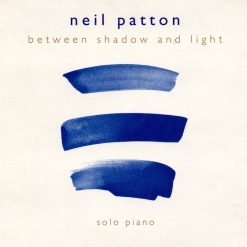
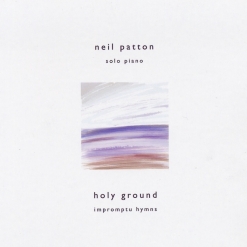
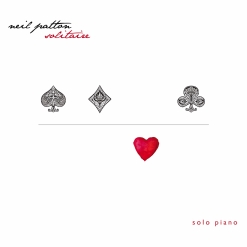
Click on album covers to
go to Kathy's reviews.
KP: Maybe you can do an anniversary re-release or something in a few years. It's a fantastic and very moving album, and really needs to be heard.
Next, you released Holy Ground - Impromptu Hymns in 2022. You hadn't really planned to release that album. What changed your mind?
NP: The recordings that became Holy Ground were originally a gift to dear friends whose teenage son had been diagnosed with cancer and was facing a year of intense chemotherapy. I was deeply moved by what they were all facing, and over a series of a few late nights, I went out to my office and began improvising on some of my favorite hymns, recording as I went. I recorded these on a “virtual” (software) piano on my computer. My mastering engineer even donated his services to make the recordings sound even better. I gave the recordings as a gift to the family and their supporters, with the added intention that those praying for them could listen as they prayed.
Over time I realized these recordings were actually something pretty special and were touching and comforting listeners deeply. With my friends’ blessing, I released the album publicly. I even painted the cover art myself. A welcome side-effect of doing this project was the easing of my anxiety over creating new music again. I began to trust my instincts once more, and felt more liberated to get back in the sandbox and play and finish the things I had started over the past few years.
KP: Isn't it wonderful how sometimes our projects can heal ourselves as well as others?
How did you choose the hymns to improvise on?
NP: All of these were songs we regularly sang in our church where I worked for so many years, and each of them had lyrics that I knew would be meaningful to those going through valleys of suffering. I actually structured the album after a sort of worship service for those who might be fighting illnesses, or for others praying for these people.
In the months leading to these recordings, I had begun a practice of playing some of these hymns instrumentally in our church worship services. In the process, I was playing through these hymns in new ways, sometimes re-harmonizing them, sometimes heading off on musical tangents. By the time I recorded them, I had already been relaxing and trying new things with these old songs.
KP: All of your albums have had very specific themes. Is that a natural evolution that pertains to life events or do you decide on a theme in advance of composing?
NP: Interesting question, and I’m not sure I know the answer. At the root of it all, I simply compose and create and see what takes shape. During that process, a theme might come to mind. My first piano album,
Impromptu, was titled based on the fact that so much of that collection had an improvisatory feel to it.
Solitaire began as distinct pieces, but as the earlier ones solidified into complete works, I found the pattern of isolation/solitude that had been fascinating me lately, and the remainder of the pieces tended to follow that mood and thread. In fact, two of the themes or titles for pieces in that album were even suggested to me by friends before their composition had begun. (I’m especially proud of the cover concept, which was a fun play on the concept of solitude and the card game, Solitaire.)
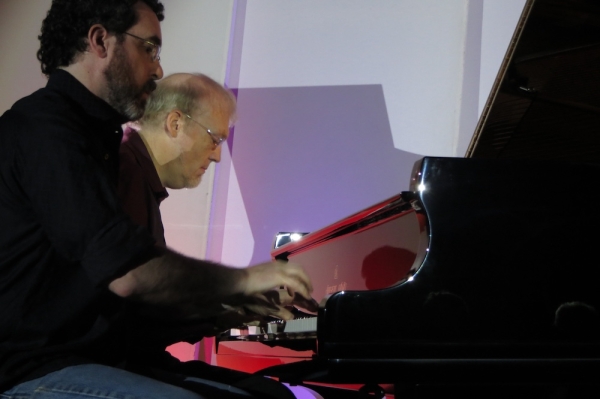
Neil with David Nevue at Whisperings 2016.
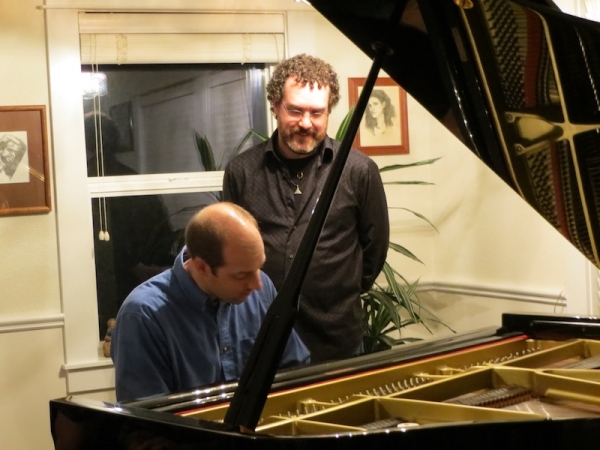
Neil with Tim Neumark in concert at Kathy's 2014.
As for
The Small Hours, I had always loved that phrase as a description of the night. Once I saw Emmanuelle’s string art, that sealed it, and I intentionally crafted almost the entire album with this theme in mind, using the theme of the night as a guide and inspiration.
KP: Very interesting! You have mentioned a few times that you'd like to do an album with your wife, Cathy, who is an excellent flutist. Is that still in the works?
NP: Yes! In fact, that is the next release we have planned. It was funny to look back at the interview from ten years ago and see that I said just about the same thing then, too. But I mean it this time! We’ve been married for 28 years, and this is long overdue. This will be quite different though, as I plan to use a variety of instruments and styles, not just piano and flute. I have a rack of synthesizers here in the studio, along with a computer full of amazing tools waiting to be used and an orchestra of friends and colleagues here in town who play so many instruments. It will be quite ambitious, but I am very excited to finish at least a few of the dozens of pieces I have started for us over the years. There’s enough here for three or four albums.
KP: You are also a piano teacher with a studio behind your house. How did you handle doing lessons during the Covid pandemic?
NP: Well, that was not fun. I had a lot to learn, and very quickly. Things went from 60 to zero in such a short span of time, and I had to keep moving if I was going to keep an income. Through much trial and error, and a lot of help from friends and strangers, I was able to set up a virtual teaching space within a couple weeks. Richard Dillon (a fellow Whisperings artist) gave me a webcam and audio pre-amp that he wasn’t using, and I combined this with my laptop and an old Wacom tablet that was collecting dust in the garage, along with my recording microphone. The result was a two-camera system with high quality sound and the ability to draw on a digital whiteboard and even on scans of my students’ theory homework! In the end, I only lost three or four students, and I was able to provide some fun and normalcy for those that hung in there. Eventually, I was able to run the studio like a personal services business (similar to a hair salon) with masks and lots of piano wiping and hand sanitizer.
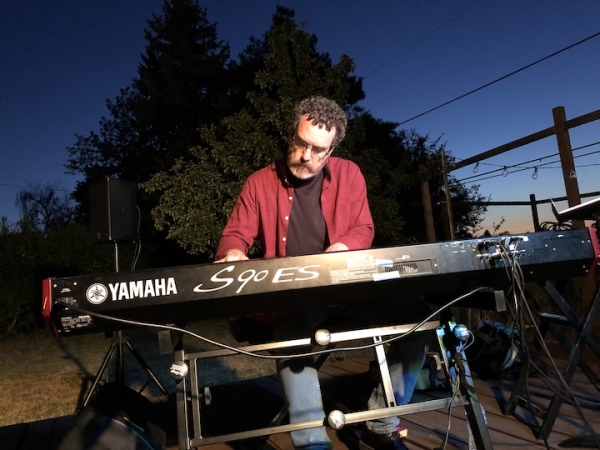
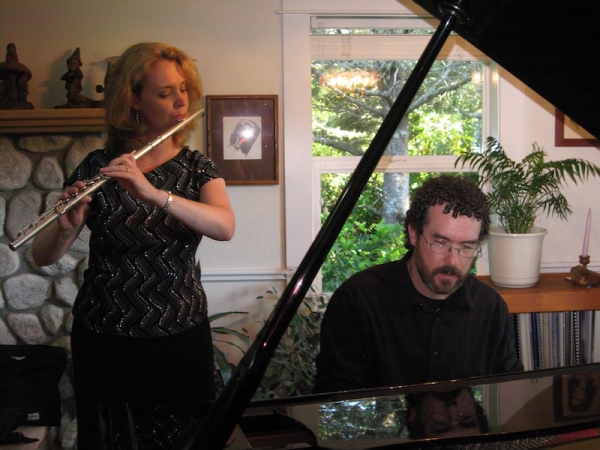
Neil and Cathy Patton at Kathy's 2010.

2014
KP: How do you feel the changes during the pandemic affected your students' progress? (I decided to retire from teaching, so I didn't have to deal with it!)
NP: The changes have been subtle. Some kids don’t handle self-discipline as well as they did before. Studying music requires a long-term commitment and a giving up of immediate gratification. It’s been harder to get kids to practice now than it was before the shutdowns, and so several of my students are learning music more slowly, or studying fewer songs at a time. However, most of them are still finding joy in it, and I have hope that things will rebuild as we distance ourselves from the harm that happened to them.
KP: How many students do you have right now?
NP: I’m currently at 32 students, with a waiting list. One side benefit is that all my students can now do Zoom lessons if the weather is bad, or if they are mildly sick and can’t come in person. I even have a weekly adult student in the Los Angeles area! This has become a selling point for my studio, and I recently increased my rates, partially because of the extra services like this that I can provide.
KP: I had quite a few adult students who did online lessons from all over the country. It was a lot of fun!
How did some of the other piano teachers that you know handle lessons during the pandemic?
NP: Most tried to grapple with the technology, with varying degrees of success. I offered help to our local teaching organization and even wrote an article for our newsletter outlining basic to advanced steps they could take to keep things rolling with their students. Like you said, some just decided the headache wasn’t worth it, and I completely understand that. Teaching through a screen was usually better than nothing, but so much was lost in not being able to directly interact with students at the piano. I still get a pain in my stomach when I think about it.
KP: The Small Hours is the first of your albums that you've recorded at home, but it's not the first time you've recorded on this piano. Tell us about that.
NP: When I recorded Hammer & Wire, Between Shadow and Light, and Solitaire, my piano technician, Jay Hogan, was kind enough to let me set up in his living room for lengthy periods, and endured my endless takes and tantrums as I recorded those collections. His instrument was an amazing 1978 Yamaha C7 grand piano that he cared for like a beloved family member, and it was always a joy to record on it. In fact, I would often get emotional when leaving after a final session had finished.
In January of 2023, the widow of one of Jay's clients gave him the Bösendorfer grand that he had been taking care of for them. Jay suddenly had two concert grand pianos in his living room, and nowhere to sit! He called me and offered to sell me the Yamaha for what he paid for it, used, 20 years ago. There was no way we could say no! By February I had it in my studio, and I am so blessed! This piano can roar and whisper. It simply does what I tell it to, which is a rare gift to have in a piano. I now have an excellent team working on the piano for me: Jay, as well as a former student of mine, Micah Sundholm of Summit Piano Service. I am in good hands.
KP: Jay has been my tuner/technician since I moved to Florence seventeen years ago. I hope he doesn't retire too soon!
You recently retired after 27 years as a worship pastor. What did that job entail?
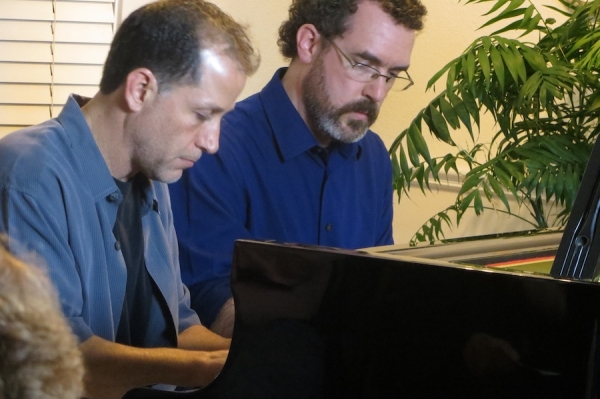
With Steve Rivera
NP: I planned worship services with the other pastoral staff, weaving in songs and other music that would work well with the sermons and presentations. I would arrange the music for various ensembles, coordinate all the volunteers (musicians and tech teams), lead rehearsals, and then lead the congregation in singing and reflection each Sunday, either from a piano or guitar. During Covid shutdowns, I planned and recorded video worship services from my office at home and then posted them on YouTube and Facebook (so I had to get decent at video production with an iPhone, as well as video and audio editing). In fact, I hear from people now who still watch those videos and are encouraged by them.
This was a calling that I was honored to fulfill, but it was also, practically speaking, a quarter-time job that took up a huge part of my energy. Add to this the conflicts and stress of Covid and I realized it was time to step back and focus on my other calling, which is my composing and performing. I was about to turn 50, and this made me realize I just couldn’t do it all while maintaining my health and sanity. Our church was shrinking, so in June of 2022 we chose to merge with another church in town and give them our building, which was an amazing turn of circumstances. I retired from that part of my ministry work and my health has definitely improved. I miss the people I worked with and the music-making we did together. I volunteer in the music ministry at my new church, and I occasionally fill in for other local churches if they have needs, so I have kept my hand in that form of service a bit.
KP: Are you back to doing live performances? Your concert with David Nevue and Louis Landon in Eugene last year was outstanding!
NP: Why thank you! That was an incredible afternoon! I have started to perform more, and I am very seriously looking at perhaps trying touring again next year, now that people finally seem ready to come to shows again. To be honest, I tire of the “content mill” that music streaming has become, and I have begun to realize that music needs to return to the real thing: personal connection in a live setting. This is where I feel the most alive, and where real connections and even ministry to hurting people can happen. We need more beauty in this world, and being in a room with real people in community, and experiencing the vibrations of the music as it is being created, is where I need to be.
KP: It's an incredible experience to be able to absorb the energy of live music!
Your daughter is married now and your son is in college. You and Cathy are almost "empty-nesters." How does that feel?
NP: It’s a new world. We love our kids and they are fun to be around. Corrie lives about 80 miles away, so we get to see her and her husband fairly often, which is great! Our son, Tim, is studying animation online and creating some very good work. With rent so insanely high these days, it’s very difficult to get started the same way we did thirty years ago. Tim pays us some rent and is saving for his classes and for eventually moving out. For now, he’s a great roommate!
KP: When you're not doing music, what kinds of things do you like to do?
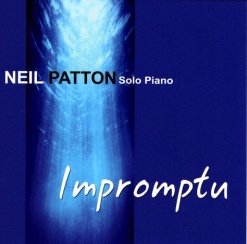
Click on album covers
to go to Kathy's reviews.
NP: I love messing around with photography when I walk in the country around my home. I only have an iPhone, but it does so much, and makes my photos better through all the digital magic it has built in. I’ve found that it feeds my soul to capture beauty this way, and it has made me more aware of what is around me, opening my eyes to possible images and moments to capture. I get so caught up in the day-to-day stresses and striving. Stopping to look at the world around me, and also to listen to the sounds of nature, has helped me to be more present.
I’ve also become a bit of a Tolkien nerd lately. I collect books by J.R.R. Tolkien, and also books about the worlds he created. I have more than a whole bookshelf at home taken up with these volumes. Have I read them all yet? Well, no, but I plan to.
KP: Do you have any future projects in mind?
NP: Aside from the new collection I am working on with Cathy, I want to produce more piano albums, especially as I have this amazing instrument and recording setup available to me any time I want. I am hoping that this inspires me and motivates me to share more music with the world. As I mentioned, I am also working on a possible collaboration with my daughter, Corrie, but more on that in the months to come. I would someday like to produce another vocal collection, as I love to sing and I miss this part of my music making since retiring from worship ministry. We’ll see what time, providence and finances allow.
KP: One of the best things that has happened to solo piano music is David Nevue's creation of Whisperings Solo Piano Radio and the community of pianists that has come together because of it. It is such a great thing to have several artists get together and perform live, and so many friendships and collaborations resulted from Whisperings. I'm hoping that now that we're coming out of the Covid era, those concerts can start happening again.
NP: I agree. We still have those relationships and connections, and our artists’ group on Facebook is still one of the best I have ever been a part of. So many online groups become self-promotion machines, with very little offered that is helpful. The Facebook artists’ page is one of the few online groups full of helpful ideas and support that is also kind and non-competitive. It’s the first place I go with questions about the business side of things, and learning what is working for the most people in this ever-changing world of music production and promotion.
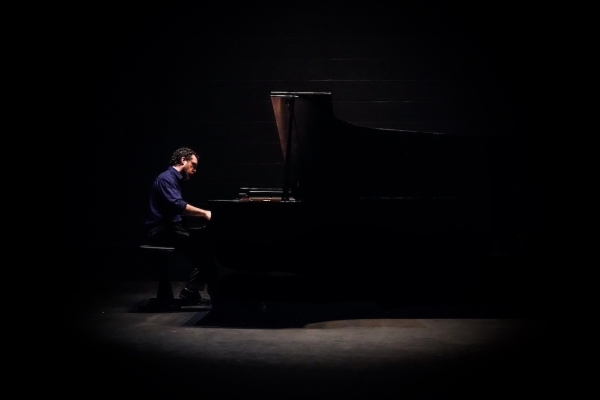
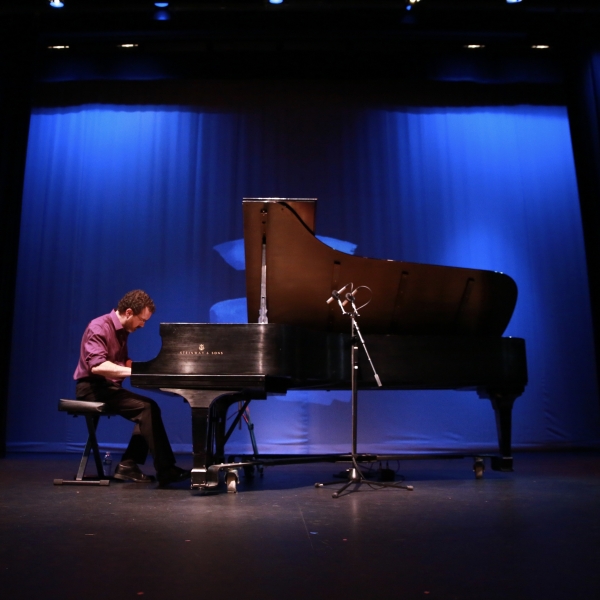
Covid really did a number on us, as live shows died for about four years. Re-starting those connections through tours and house concerts is going to take time. I recently heard that some folks from various parts of the new age music industry are looking into possibly starting a new annual gathering, similar to the annual Whisperings All-Star Shows and the ZMR Awards that we enjoyed for so long. I would be very excited about that if it becomes a reality.
KP: Me, too! Well, I think we covered quite a bit of territory here. Is there anything else you'd like to "talk" about?
NP: I’ve talked for way too long. I suppose the only soapbox item that comes to mind is why I still do albums instead of a steady stream of singles. The model that has evolved over the past several years is a return to a singles economy in music releases. More and more, algorithms on streaming sites require a regular release of singles to maintain listeners. It is what it is, but it simply is not how music was created (and published) in Europe and the Americas for the past few centuries. Composers have consistently created aural meals for listeners to enjoy, with a variety of moods and feelings. Some would publish a collection of keyboard works, like Tchaikovsky’s The Seasons, or Chopin’s Preludes or Bach’s dance suites. Other times a composer would publish larger scale works. One Beethoven sonata, with three or four movements, would cover a world of feelings and styles, and Rachmaninov’s Vespers or Pärt’s Te Deum take time to evolve and raise and lower the temperature in the room as they are performed over the space of 30 to 60 minutes.
While many wonderful and gifted artists have made this system work, and are creating great music within this framework, I’m struggling to adapt. I guess I keep thinking in terms of preparing a multi-course meal, and it’s hard for me to serve up a musical side dish of carrots or beans, and expect it to share all I have to say, and then to ask you to wait a month before experiencing the rice, and maybe another month to try the main course. Are our attention spans so short that we can’t take the moments to sit with a piece of art and take it in over time? Maybe so, but maybe I can keep pointing in an alternative direction. Art museums have benches placed in front of paintings for this very reason, to allow the viewer time to sit with the piece and start to take in more than what a passing glance affords. I might not get the streams or financial rewards by waiting and releasing complete albums, but I do feel I am still saying what I need to say with these larger artistic statements. Maybe I’m a dinosaur...
This approach also allows me time to sit with my own music and let it evolve. Several pieces from The Small Hours were almost released too early in an effort to feed the streaming machine, but they would have missed their full potential if I had tried to play that game. I did lose followers by waiting so long, but I feel better about what I have released to the world. Some artists do have the ability to produce good work regularly and quickly like that. Perhaps I’ll change my mind later if what I am composing and recording allows for it, but I guess I’m refusing to let a streaming algorithm dictate how I will compose and present my art. And in the meantime, I can always teach and perform to pay those bills.
KP: Amen!
NP: Thanks for the chance to talk too much, Kathy! It’s always good to catch up with you. And thank you for the years of friendship and support!
KP: You are more than welcome, Neil!
Many thanks to Neil Patton for taking the time to do this interview! To learn more about Neil and his music, be sure to visit
his website and his
Artist Page here on MainlyPiano.com.
Kathy Parsons
October 2024

